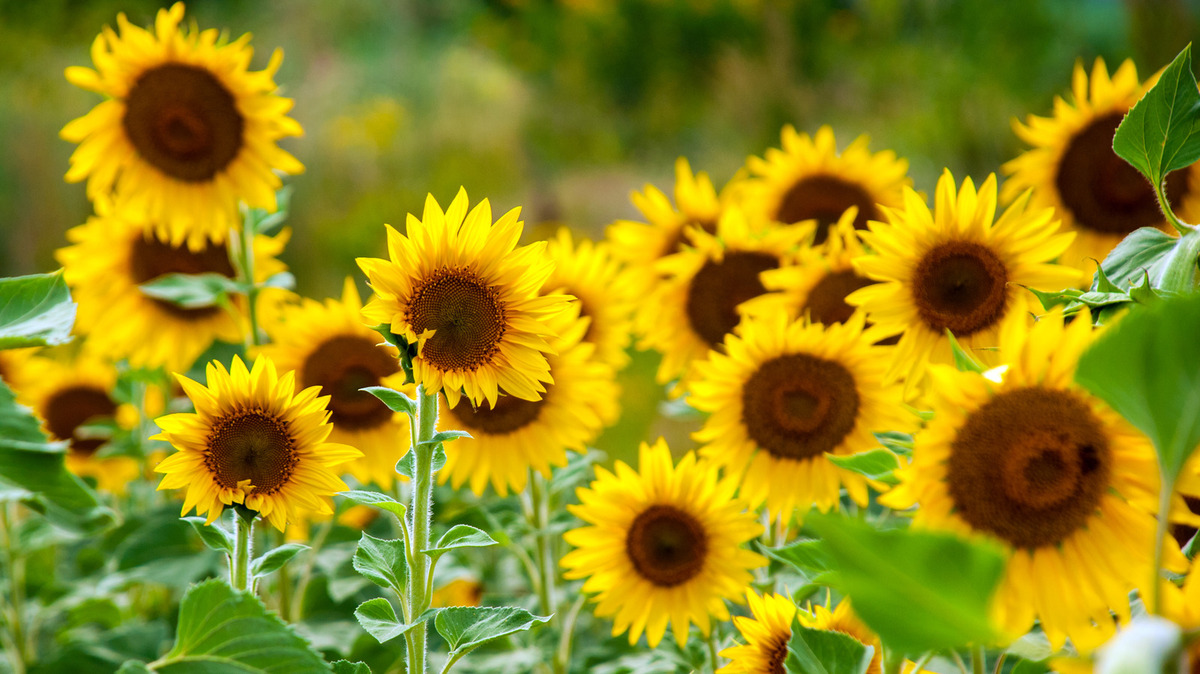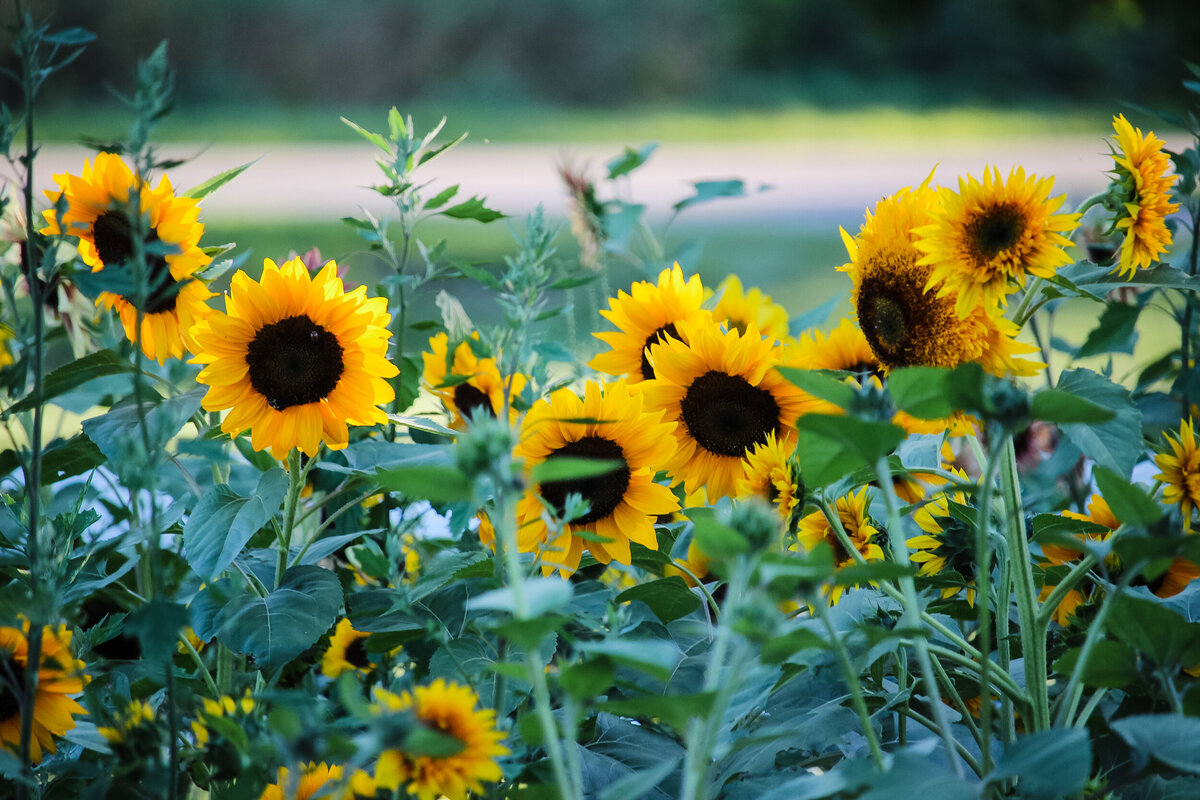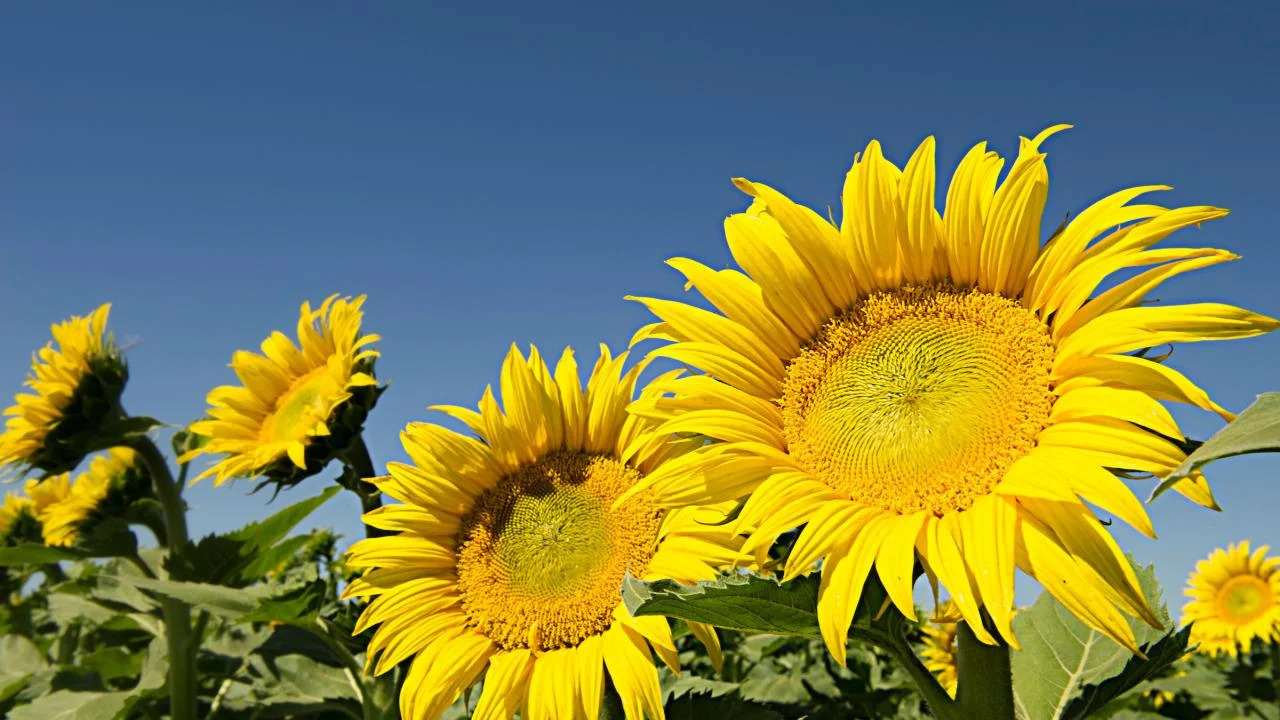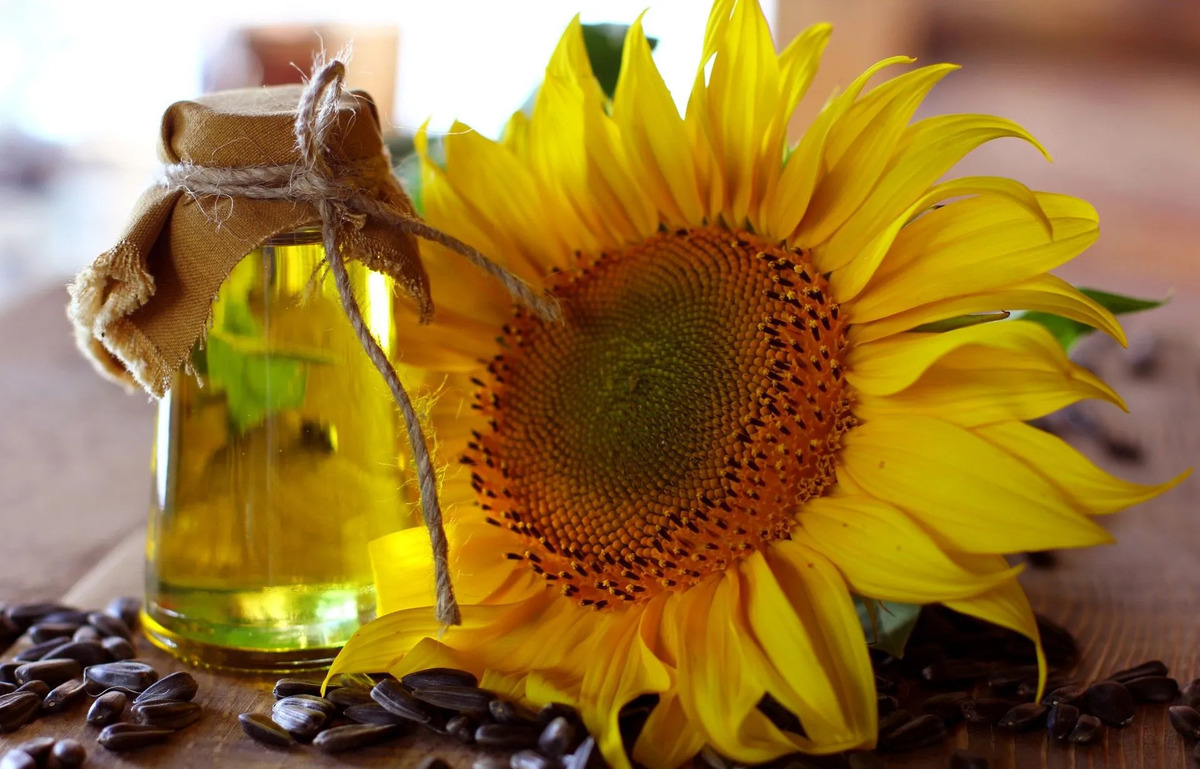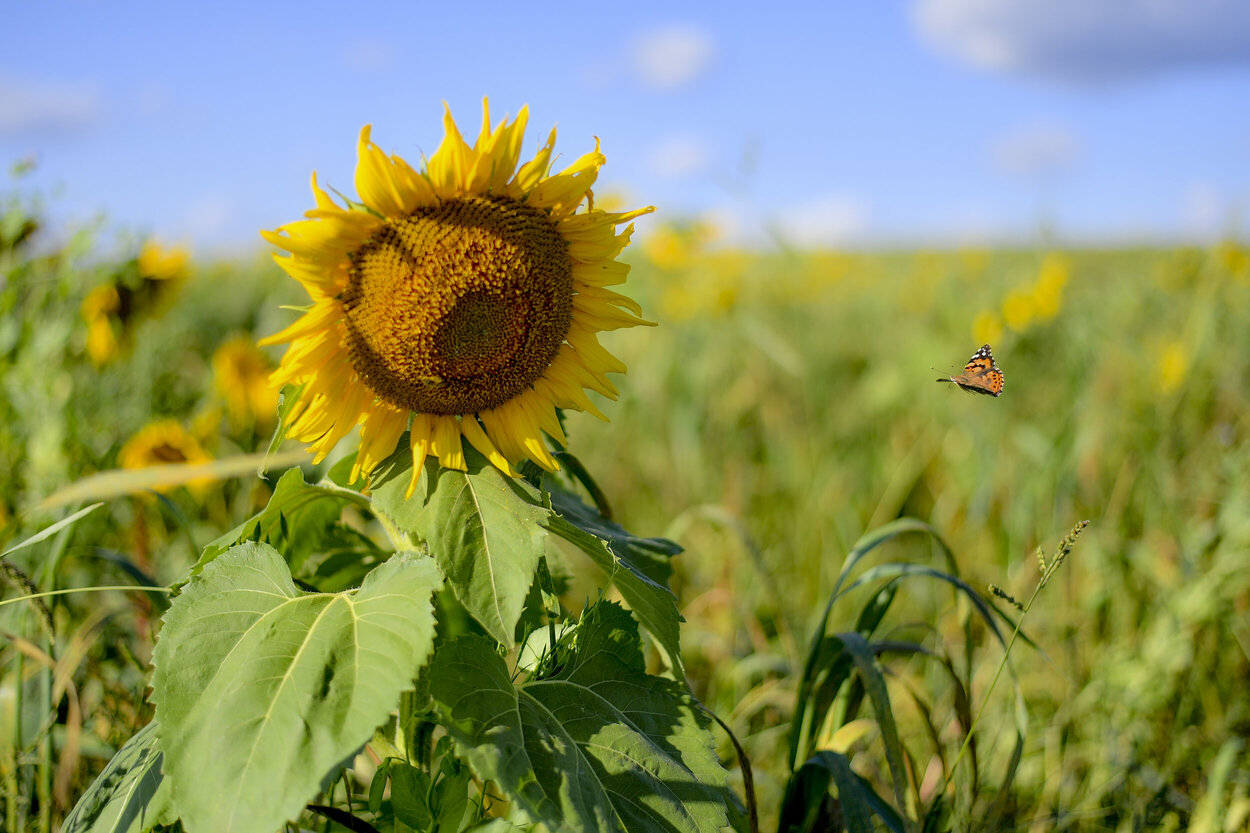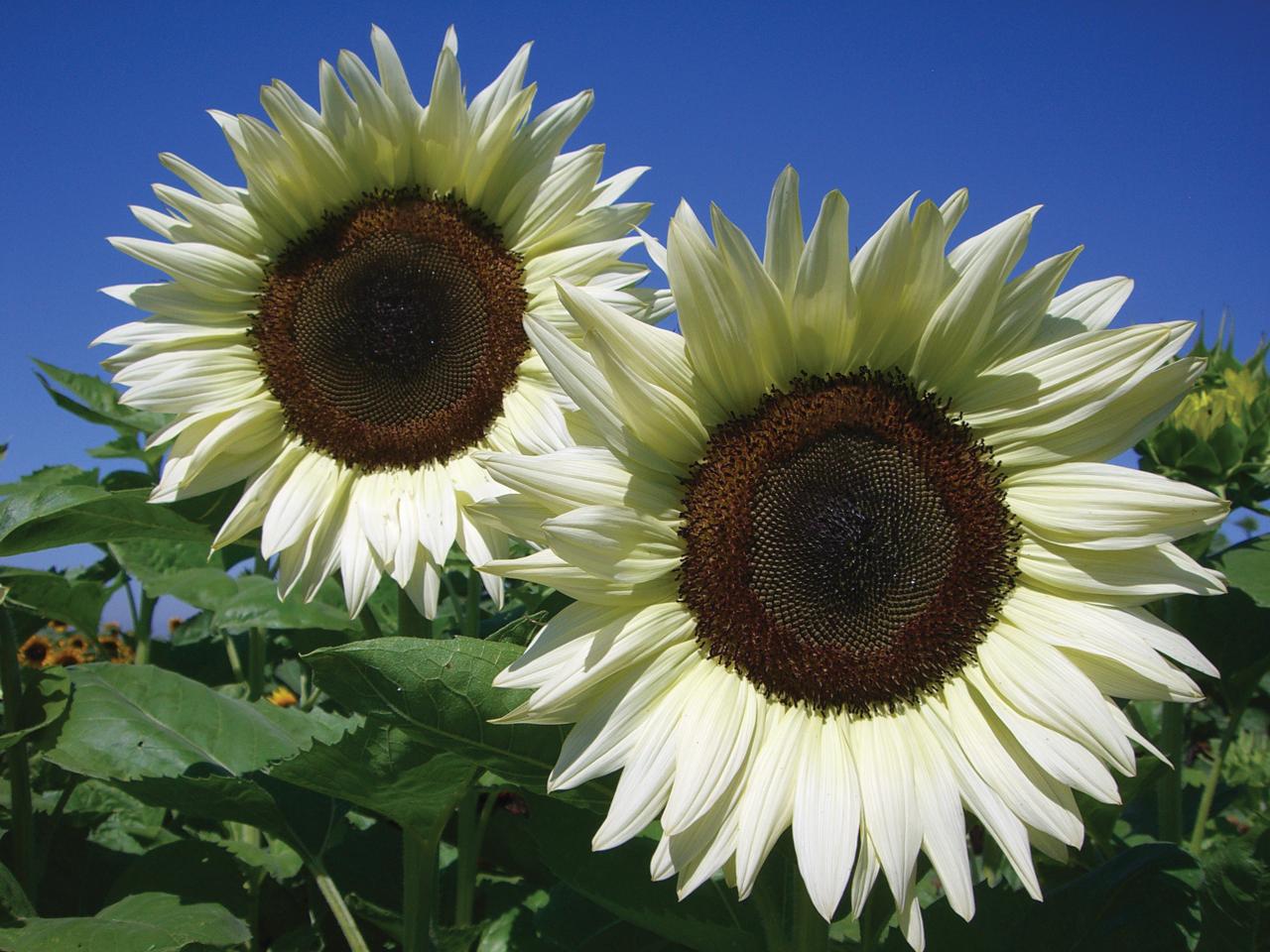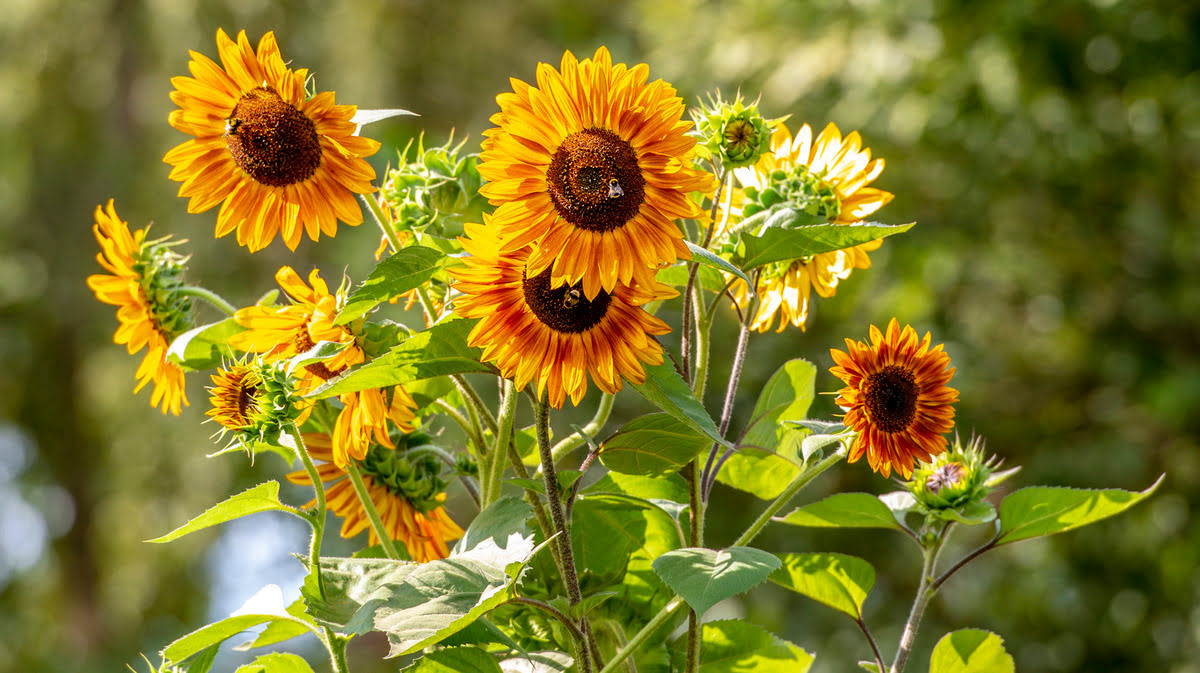Home>Types of Gardening>Ornamental Gardening>Where Can Sunflowers Be Found
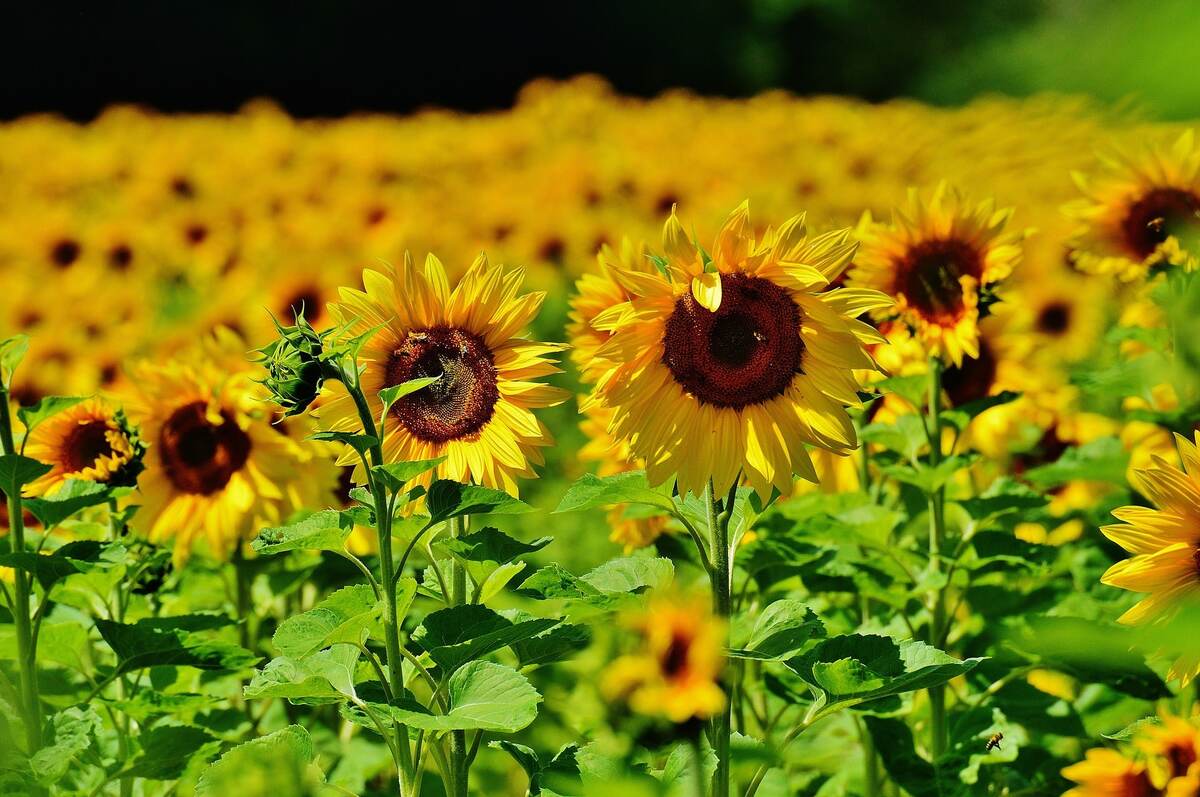

Ornamental Gardening
Where Can Sunflowers Be Found
Modified: January 22, 2024
Discover the beauty of sunflowers in ornamental gardening. Learn where these stunning flowers can be found and how to incorporate them into your garden.
(Many of the links in this article redirect to a specific reviewed product. Your purchase of these products through affiliate links helps to generate commission for Chicagolandgardening.com, at no extra cost. Learn more)
Table of Contents
Introduction
Sunflowers are iconic and beloved flowers known for their vibrant yellow petals and towering height. These beautiful plants have captured the attention and admiration of people around the world. Sunflowers are not only visually stunning but also carry deep symbolism and cultural significance in many societies.
With their origin dating back thousands of years, sunflowers have a rich history that spans across different continents and cultures. They have become a staple in ornamental gardening due to their striking appearance and versatility in various garden settings.
In this article, we will explore the native and cultivated range of sunflowers, shedding light on the different regions where these captivating flowers can be found. From their roots in North America to their widespread presence in Europe, Asia, Africa, Australia, and South America, sunflowers have truly made a global impact.
Join us on this journey as we unveil the diverse locations where sunflowers flourish and discover the remarkable beauty they bring to gardens around the world.
Native Range of Sunflowers
The native range of sunflowers stretches across the Americas, primarily North America. It is believed that sunflowers originated in what is now the southwestern United States and northwestern Mexico. Native American tribes, such as the Hopi and Zuni, cultivated and revered sunflowers long before Europeans arrived on the continent.
In their natural habitat, sunflowers thrive in areas with well-drained soil, ample sunlight, and moderate rainfall. They are commonly found along roadsides, in prairies, and on the edges of woodlands. Sunflowers have adapted to various climates, ranging from the hot and dry deserts of the Southwest to the cooler regions of the northern United States and Canada.
The native sunflower species in North America include the common sunflower (Helianthus annuus), which is the most well-known and widely cultivated sunflower variety. Other native species include the silverleaf sunflower (Helianthus argophyllus), the swamp sunflower (Helianthus angustifolius), and the Maximilian sunflower (Helianthus maximiliani).
These native sunflowers play an essential role in supporting local ecosystems. They attract pollinators, such as bees and butterflies, and provide a source of food for birds and small mammals. Native sunflowers also have cultural significance for many Native American tribes, who use them in traditional ceremonies and crafts.
It is important to note that due to human cultivation and hybridization, many sunflowers found in the wild today are actually hybrids or cultivated varieties. Nonetheless, the native range serves as the foundation for the cultivation and widespread popularity of sunflowers throughout the world.
Cultivated Range of Sunflowers
The cultivation of sunflowers has expanded far beyond their native range, making them a popular and widely grown plant all over the world. Sunflowers are valued for their ornamental beauty, as well as their practical uses, such as oil production and as a food source for humans and animals.
Europe has embraced sunflowers as a staple in ornamental gardening. Countries like France and Italy have a long-standing tradition of growing sunflowers for their aesthetic appeal. Sunflower fields in these regions create breathtaking landscapes, with row upon row of golden blooms stretching as far as the eye can see.
In Asia, sunflowers have gained significant popularity in countries like China, Japan, and India. From small home gardens to vast agricultural fields, sunflowers add a burst of color and charm. In Japan, sunflowers are associated with feelings of warmth and happiness, leading to their use in festivals and celebrations.
Africa has also embraced sunflowers, particularly in countries like South Africa and Kenya. Sunflower cultivation not only provides a beautiful backdrop but also serves as a source of income for local farmers. The sustainable cultivation of sunflowers for oil production plays a crucial role in the agricultural economy of these regions.
Australia and South America have also joined the sunflower frenzy. In Australia, sunflowers are commonly grown in the sun-drenched regions of Queensland, New South Wales, and Victoria. These cheerful flowers brighten up the landscape and attract tourists from around the world.
In South America, countries like Argentina and Colombia have seen a rise in sunflower cultivation. Argentina, in particular, has become one of the leading global producers of sunflower oil, contributing to the country’s agricultural exports.
Thanks to their versatility and adaptability, sunflowers have become a global phenomenon. From urban balconies to sprawling fields, sunflowers have the power to captivate and bring joy to people in all corners of the world.
Sunflowers in North America
North America, particularly the United States and Mexico, holds a significant place in the history and cultivation of sunflowers. Native to this region, sunflowers have become an iconic symbol of the American landscape.
In the United States, sunflowers are widely grown in many states, including Kansas, North Dakota, South Dakota, and Nebraska. The vast fields of sunflowers in these regions create a stunning display during their peak blooming season. Sunflowers are not only cherished for their beauty but also cultivated for their seeds, which are used as snacks, in baking, and for oil production.
Kansas, known as the “Sunflower State,” is the largest producer of commercial sunflowers in the United States. The state’s fertile soil and ideal growing conditions make it a prime location for sunflower cultivation. Sunflower festivals and events are held annually in Kansas, attracting visitors from far and wide.
In Mexico, sunflowers hold cultural significance and are used in various traditions and celebrations. The vibrant yellow blooms are often incorporated into Day of the Dead altars and other festive decorations. Mexico also boasts diverse sunflower species that are native to the country.
Native American tribes in North America have long revered sunflowers for their spiritual and practical importance. They cultivated sunflowers for food, oil, and medicinal purposes. Sunflowers were an integral part of their agricultural practices and played a vital role in their cultural heritage.
North America is also home to several organizations and initiatives dedicated to the preservation and promotion of native sunflower species. These efforts aim to protect the biodiversity of sunflowers and maintain their natural habitat.
In summary, North America is where sunflowers first originated and continue to thrive. With their vibrant beauty and cultural significance, sunflowers have become deeply rooted in the hearts and landscapes of this diverse continent.
Sunflowers in Europe
Europe has embraced sunflowers as a beloved flower, with their sunny disposition adding a vivid splash of color to the European landscape. These cheerful blooms have become a staple in ornamental gardens, fields, and even urban settings across the continent.
France, in particular, has a strong association with sunflowers. The iconic image of sunflower fields stretching for miles in the French countryside is instantly recognizable. The southern region of Provence is renowned for its picturesque sunflower fields, attracting droves of tourists each year. Sunflowers have also inspired French artists, such as Vincent van Gogh, who famously painted sunflower bouquets.
Italy is another European country where sunflowers flourish. The stunning landscapes of Tuscany and Umbria are adorned with fields of sunflowers, creating a mesmerizing sight. Sunflowers are often grown alongside other crops, enhancing the agricultural beauty of the region.
Other countries in Europe, including Spain, Germany, and Hungary, have also adopted sunflowers as a cherished flower. Sunflower cultivation in Spain is primarily focused on oil production, with the country being one of the leading producers of sunflower oil in Europe. In Germany, sunflowers are not only grown for their ornamental value but also for their seeds, which are enjoyed as a popular snack. Hungary boasts beautiful sunflower fields, particularly in the Great Hungarian Plain, where the flowers thrive in the country’s fertile soil.
Sunflowers have become an integral part of European culture and celebrations. They are often used in weddings, festivals, and floral arrangements, symbolizing happiness, warmth, and a connection to nature. In many European countries, sunflowers are associated with the summer season, brightening up gardens and bringing joy to all who see them.
European gardeners and enthusiasts have also played a significant role in breeding new sunflower varieties, expanding the range of colors, sizes, and forms available. This continuous innovation has helped maintain the popularity and diversity of sunflowers in Europe.
From the sunflower fields of France to the sun-soaked landscapes of Italy, sunflowers have become a cherished part of the European floral tapestry, bringing beauty and joy to both locals and visitors alike.
Sunflowers in Asia
In Asia, sunflowers have captured the hearts of people and have become a popular flower for both ornamental and practical purposes. Their vibrant and cheerful appearance adds a burst of color to the Asian landscape.
China is one of the leading countries in sunflower cultivation, known for its vast fields of golden sunflowers. The province of Henan, in particular, is renowned for its sunflower production and attracts numerous visitors to admire the breathtaking landscapes. In China, sunflowers are associated with longevity, good fortune, and happiness.
Japan has also embraced the beauty of sunflowers. These sunny flowers are particularly cherished during the summer season and are often featured in festivals and events. One notable event is the Himawari Festival held in the town of Hokuryu, known as the “Sunflower Town.” The festival celebrates the blooming of thousands of sunflowers, attracting tourists and locals alike.
In India, sunflowers are widely grown for their oil-producing properties. The country has a significant demand for sunflower oil, making sunflower cultivation an important agricultural practice. The bright yellow blooms also add a touch of beauty and charm to Indian gardens and landscapes.
Other Asian countries, such as Thailand and Vietnam, have also embraced sunflowers. In Thailand, sunflower fields can be found in the countryside, offering picturesque views and attracting visitors. Vietnam has seen an increase in sunflower cultivation, especially in the Da Lat region, where the flowers add a vibrant touch to the rolling hills.
Throughout Asia, sunflowers have transcended their ornamental value and hold cultural significance. They are often used in religious ceremonies and festivals, symbolizing positivity, vitality, and prosperity. Sunflowers have a way of brightening up landscapes and bringing a sense of joy and warmth to the people of Asia.
Asian gardeners and horticulturalists have also made contributions to sunflower breeding and hybridization, creating unique varieties that cater to different climates and preferences. This continuous innovation ensures the availability of diverse and stunning sunflowers across the continent.
Asia’s love affair with sunflowers continues to blossom, as these radiant flowers bring their golden glow to gardens, fields, and celebrations throughout the continent.
Sunflowers in Africa
In Africa, sunflowers have found a home and have become a beloved flower with both practical and ornamental value. The vibrant yellow blooms of sunflowers add a touch of beauty to the diverse landscapes of this vast continent.
South Africa is one of the leading countries in sunflower cultivation in Africa. The warm climate and fertile soils in regions such as the Free State and Mpumalanga are ideal for growing sunflowers. Sunflower fields in South Africa create stunning scenery, attracting both locals and tourists.
Kenya has also embraced sunflowers as a valuable crop. Sunflowers are cultivated in different regions across the country, providing a source of income for many farmers. The sunflower industry in Kenya plays a vital role in the country’s agricultural sector and economy.
Sunflowers in Africa are not only grown for their beauty but also for their practical uses. Sunflower oil production is a significant industry in countries such as Tanzania, Zimbabwe, and Nigeria. The oil extracted from sunflower seeds is used for cooking, as an ingredient in various food products, and for industrial purposes.
Traditionally, sunflowers hold cultural significance for many African communities. They are associated with positive traits such as happiness, vitality, and abundance. Sunflowers are often used in festivals, traditional ceremonies, and celebrations, adding a touch of joy and symbolism to these events.
In recent years, the aesthetic appeal of sunflowers has gained popularity among urban gardeners in African cities. Balcony gardens and small-scale urban farms feature sunflowers, bringing a splash of color to urban landscapes and brightening up the concrete jungle.
Overall, sunflowers in Africa showcase their versatility and adaptability, not only as ornamental flowers but also as crops with economic importance. They continue to add beauty, cultural significance, and practical benefits to the diverse cultures and landscapes of the continent.
Sunflowers in Australia
Australia, with its vast landscapes and abundant sunshine, provides an ideal environment for sunflowers to thrive. These cheerful flowers have made their mark on the Australian gardening and agricultural scene, captivating the hearts of both locals and visitors.
The sun-drenched regions of Queensland, New South Wales, and Victoria are particularly known for their sunflower cultivation. Fields of sunflowers create stunning visuals, offering a burst of golden yellow against the blue sky. The beauty of sunflower fields has become a popular attraction, drawing tourists who want to immerse themselves in the awe-inspiring landscapes.
Sunflowers have become a common sight in Australian gardens, adding a touch of vibrant color to home landscapes. They are favored for their easy cultivation and ability to thrive in the country’s diverse climates and soil conditions.
Aside from their ornamental value, sunflowers play a practical role in Australia as well. Sunflower seeds are widely enjoyed as a snack and are commonly used in baking, adding a nutty flavor and texture to various dishes. In recent years, there has also been an increase in the production of sunflower oil in Australia, further highlighting the versatility of these beautiful flowers.
The Australian fascination with sunflowers extends beyond gardens and fields. Artists and photographers often use sunflowers as subjects, capturing their striking beauty and vibrant energy in their artwork. Sunflowers have even inspired festivals and events, showcasing their significance in Australian culture.
From the countryside to the urban landscape, sunflowers bring a sense of joy and warmth to Australia. Their ability to thrive in a variety of conditions and their stunning display of blooms make them a beloved flower in the land down under.
Sunflowers in South America
South America, with its diverse landscapes and favorable climate, has embraced sunflowers as a vibrant and beloved flower. From vast agricultural fields to urban gardens, sunflowers add a touch of beauty and charm to the continent.
Argentina is one of the leading countries in sunflower production in South America. The fertile soils of the Pampas region provide the perfect conditions for sunflower cultivation. Argentina’s vast sunflower fields, stretching across the horizon, are a testament to the country’s rich agricultural heritage. Sunflower oil production is also a significant industry in Argentina, making it one of the major global exporters of sunflower products.
In Colombia, sunflowers are synonymous with happiness and positivity. They are often used in floral arrangements and celebrations, adding a vibrant and cheerful touch. Sunflower fields can be found in various regions of the country, contributing to its rich biodiversity.
Other South American countries, such as Brazil and Chile, have also embraced sunflowers. In Brazil, sunflowers are grown both for their ornamental beauty and for oil production. Chile, with its diverse landscapes, features sunflowers as a beloved flower in gardens and commercial fields.
South American folklore often incorporates sunflowers as symbols of fertility, abundance, and hope. These sunny flowers are associated with positive energy and are believed to bring good luck and prosperity. Sunflowers are also present in traditional rituals and celebrations, adding a touch of joy to cultural events.
From the coastal plains of Chile to the expansive fields of Argentina, sunflowers have become a cherished part of the South American landscape. They bring vibrant colors, a sense of joy, and a connection to nature, making them a beloved flower among the people of South America.
Conclusion
Sunflowers, with their striking beauty and cheerful disposition, have captured the hearts of people all around the world. From their native range in North America to their widespread cultivation in Europe, Asia, Africa, Australia, and South America, sunflowers have truly made their mark on the global gardening and agricultural landscape.
The native range of sunflowers in North America showcases their deep roots and cultural significance in Native American traditions. They continue to grace the region’s prairies and woodlands, attracting pollinators and providing sustenance for wildlife.
As the cultivation of sunflowers expanded, Europe embraced these vibrant flowers as a staple in ornamental gardening. France and Italy, in particular, are known for their breathtaking sunflower fields that stretch as far as the eye can see.
In Asia, sunflowers have become a symbol of happiness and positivity, with countries such as China, Japan, and India incorporating them into festivals and celebrations. The practical uses of sunflowers, such as oil production, also contribute to their cultivation in these regions.
In Africa, Australia, and South America, sunflowers thrive in sunny climates, adding beauty to landscapes and providing economic value. Sunflower fields in these regions create stunning visuals, while the seeds and oil derived from sunflowers contribute to various industries.
Throughout their journey across continents, sunflowers have not only captured the attention of gardeners and photographers but also hold cultural significance. They symbolize happiness, vitality, and abundance, and are often used in traditional ceremonies and rituals.
In conclusion, sunflowers have become an emblem of beauty, joy, and cultural richness in ornamental gardens, agricultural fields, and urban landscapes around the world. Their vibrant colors and sunny disposition continue to brighten the lives of people, proving that no matter where they are found, sunflowers always bring a sense of warmth and happiness. So, let us embrace the magic of sunflowers and continue to cultivate their beauty for generations to come.
